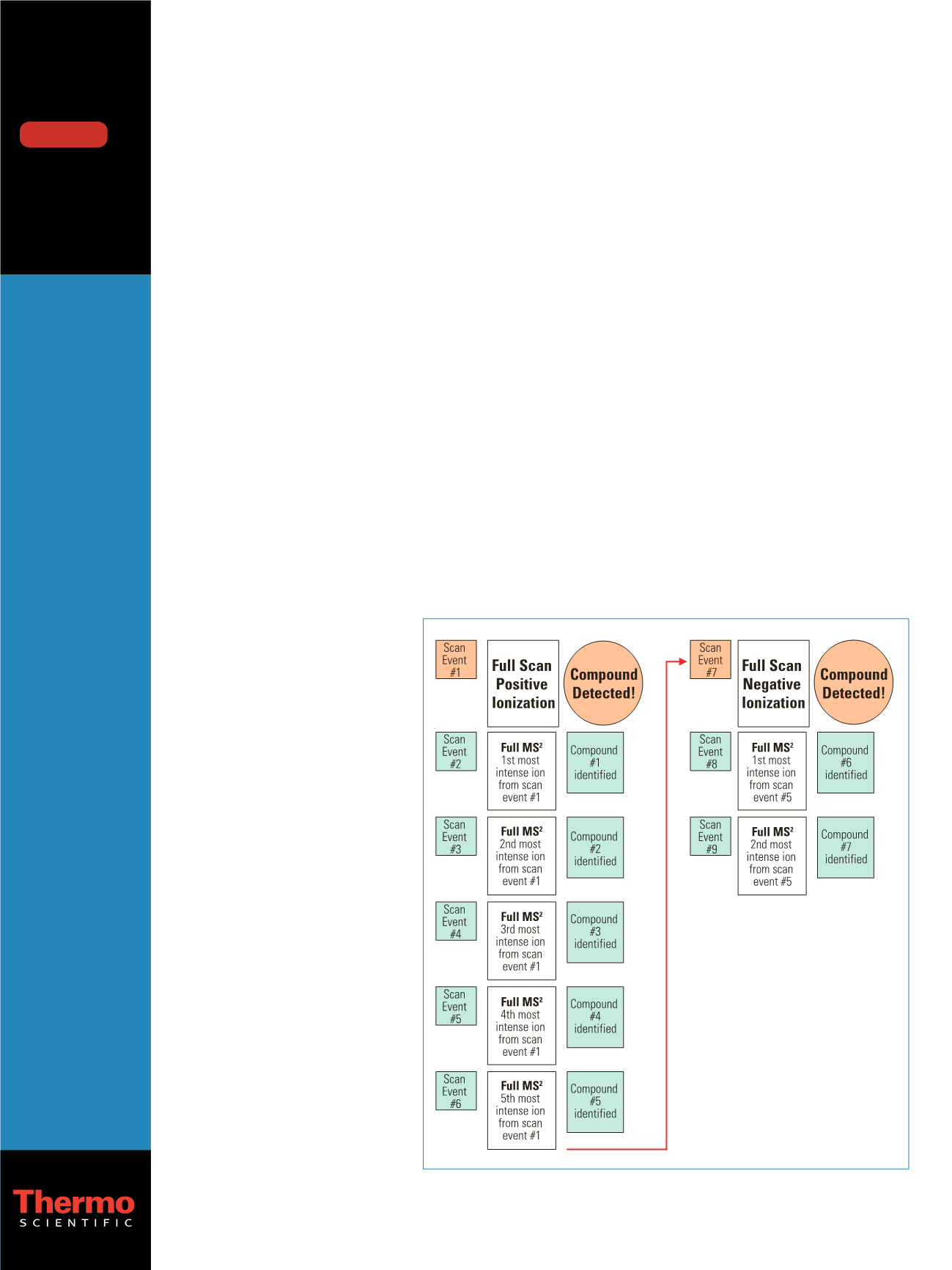

Screening Drugs and Toxic Compounds with
LC-MS/MS: An Alternative to LC-UV for
Research Toxicology Labs
Jordan Velardo
1
, Monique Manchon
1
, Bénédicte Duretz
2
, Dennis Nagtalon
3
, Marta Kozak
3
;
1
Laboratory of Toxicology, Lyon Sud Hospital, Pierre-Bénite, France;
2
Thermo Fisher Scientific, Les Ulis, France;
3
Thermo Fisher
Scientific, San Jose, CA, USA
Introduction
Screening for drugs of abuse and other toxic compounds
in biological samples has quickly become a routine assay
conducted in many research toxicology laboratories. The
main challenge is to get rapid and accurate results amidst
the generally large number of potential analytes to be
identified within complex biological matrices. One of the
techniques widely used in this area is high pressure liquid
chromatography (HPLC) combined with photo diode
array detection (DAD) or ultra-violet (UV) detection. The
most popular LC-UV platform has been the Bio-Rad
®
REMEDi
™
HS drug profiling system. When this platform
was recently discontinued, a significant technological gap
became apparent. Now this gap is rapidly being filled by
newer, more effective high pressure liquid chromatography
- mass spectrometry (HPLC-MS) technologies.
Here we present the workflow
and results obtained by using the
Thermo Scientific ToxSpec Analyzer,
a new UHPLC-MS system based on
ultra-high pressure liquid
chromatography and linear ion trap
mass spectrometry technology.
Goal
Evaluate an LC-MS/MS method for
screening and semi-quantitation of
drugs and toxic compounds in serum
and urine matrices to determine if
this approach can provide an
alternative to REMEDi technology
for research toxicology.
Experimental
The ToxSpec
™
Analyzer combines
hardware, software, and screening
methodologies designed to
significantly simplify and improve the
screening assay workflow. LC-MS
2
data is acquired by using a pre-
configured instrument method, and the data is
automatically processed, post-acquisition, by Thermo
Scientific ToxID automated drug screening software.
The LC-MS screening was performed on Thermo
Scientific instrumentation including an LXQ
™
linear ion
trap mass spectrometer coupled to an Accela
™
UHPLC
system using a polarity-switching and scan-dependent
MS/MS experiment (Figure 1). The MS
2
spectra generated
were processed through ToxID
™
software. Using a novel
screening algorithm, the software program identifies target
analytes through a MS
2
library search against a large
spectral library of known analytes as well as expected
retention times. Semi-quantitative data results can also be
generated concurrently from the MS
2
spectral intensity
ratios between the target analyte and the corresponding
internal standard.
Key Words
• ToxSpec
Analyzer
• ToxID software
• LXQ Linear Ion
Trap
• Accela UHPLC
System
Application
Note: 467
Figure 1: Polarity-switching and scan-dependent
MS/MS experiment
DOWNLOAD


















